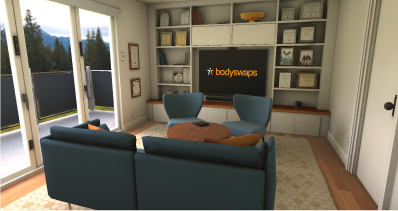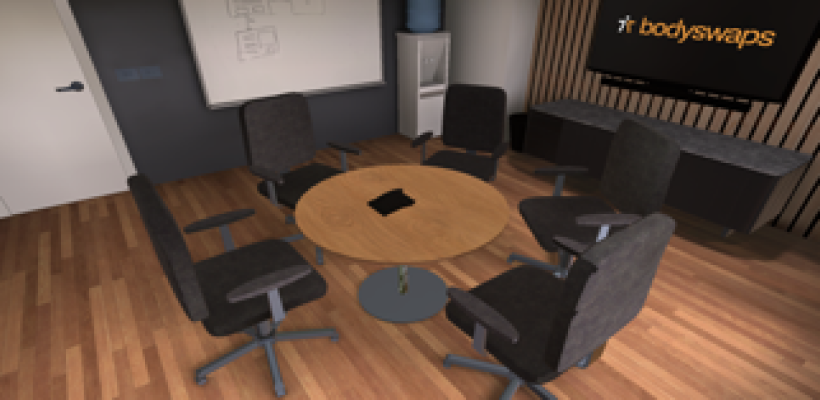Negotiation and Conflict Management: Approach and Mindset
Tutor Notes
There is a common misconception that successful negotiation depends on your ability to ‘win the argument’ by convincing the other side to agree to your terms. In reality, this approach often leads to heated exchanges and less successful outcomes.
In this module, learners discover how to manage emotions and take an approach that seeks to understand the other party – rather than try to convince them to see their side.
Through coached activities, they will come to see how ‘understanding’ beats ‘convincing’ by revealing hidden value that benefits everyone.
About this resource
Key learner outcome and goals
Learning Outcome
Discover how negotiations are improved by managing emotions and taking an approach that seeks to understand the other party’s interests.
Learning Goals
- Recognize the link between emotions and approaches to negotiating
- Identify behaviors that indicate a ‘convincing’ approach
- Investigate interests for a better outcome
- Successfully negotiate a positive outcome by adopting an ‘understanding’ approach
A word about terminology
As a medium, Virtual Reality is not best suited to didactic teaching methods.
However, our intention is that all Bodyswaps modules follow a student-centred constructivist pedagogy. This means creating rich experiences in which learners can explore key concepts and ideas and reach their own conclusions.
This is why our documents speak in terms of learning goals and outcomes, rather than measurable ‘learning objectives’ (a la Bloom’s Taxonomy) per se.
Module structure
The complete journey takes the learner through 4 interactive topics, led by virtual coaches Zak and Amira, as well as ancillary activities such as self-reflection, and the exit survey.
If this is the learner’s first experience of a bodyswaps module, they will also complete a brief induction to familiarise them with the features of the app and prepare them for the experience to come.
It is a linear experience, meaning the learner will be guided step by step through all the activities by the coaches.
We recommend that learners fully interact with each activity to get the full benefit.
It is estimated that each topic will take the learner approximately 5-10 minutes to complete, although completion times vary depending on whether the learner chooses to repeat topics to explore different options (encouraged) or fine-tune their freeform responses.
Learner Journey
.svg)
.svg)
- Freeform interaction
- Gauge diagnostic interaction
.svg)
- Single category observation interaction
- Freeform interaction
.svg)
conversation
interaction
.svg)
.svg)
.svg)
.svg)
Characters
Virtual mentor


Zak
Virtual mentor
Shui
Head of Sales and Department head at OnSite Inc.
Cyd
Head of Content and former Department head at Onsite Inc.
Ade
Supplier of a rare fruit (‘breadfruit’)
Danny
Rival negotiatorLearning Environments

Tutor Room
Breakout room

Meeting space
Purpose
Familiarise learners with the controls and navigation
Location
Characters
N/A
Duration
3:00
The first time learners use Bodyswaps, this onboarding sequence familiarises them with the features of the app, takes them through an avatar selection and embodiment activity, and prepares them for the experience to come.
In the induction, learners will:
- Find out how this training is different from the rest
- Select their avatar
- Discover their virtual journal
- Learn how to navigate and use the tools and settings
Purpose
Introduce the module and reflect on current confidence levels before beginning the activities
Location
Characters
Journal
Duration
The module opens with Zak talking to Amira about how deciding on a holiday location with his partner usually descends into an argument. His partner convinces him where they should go, and he ends up feeling disappointed. She may have won on the surface, but did she really win if Zak was unhappy?
As Amira explains, being aware of your mindset and taking an understanding approach can lead to better outcomes for everyone in negotiations – even if it doesn’t seem like a negotiation on the surface.
After setting out the goals for the module, the coaches then invite the learner to complete a short likert-style self-reflection survey, to indicate how confident they feel about the following key learning points:
- Recognizing the link between emotions and approaches
- Identifying behaviors that indicate a ‘convincing’ approach
- Investigating interests for a better outcome
- Successfully negotiating a positive outcome by adopting an ‘understanding’ approach
These self-reflection questions will be repeated in the debrief at the end, to assess how the learner’s confidence levels have changed.
Note: If you wish to receive data about how the learner’s confidence levels have changed as a consequence of the training, it’s important that they complete this introduction and the debrief at the end.
Purpose
Encourage learners to reflect on personal experiences of unhappy negotiation outcomes
Location
Characters
Zak and Amira
Journal
Duration
Our natural response in negotiations is often to fight for what we want, or to avoid conflict altogether. Overcoming that natural fight or flight instinct can be difficult. Zak shares a story of a time when his conflict-avoidant response to a negotiation with a pushy salesman resulted in him caving and signing up for several things he didn’t really want.
The learner is invited to think about how they feel in these kind of situations and then describe, in their own words, a negotiation they’ve experienced that ended with them or the other side feeling bad about the outcome.
Then, to explore why it ended badly, the learner answers a series of three-option multiple choice questions about their emotional responses and approach during the negotiation in a gauge diagnostic activity. Options reflect three different approaches:
- Convincing/Competitive
- Collaborative/Understanding
- Avoidant
An on-screen gauge moves after each answer to indicate which type of response they chose. At the end, the gauge points to whether their responses mostly reflected being convincing, collaborative, or conflict avoidant. The coaches provide tailored feedback accordingly, offering some tips for finding a more balanced approach.
Purpose
Recognise the link between emotions and approaches in negotiating, and identify behaviors that indicate a ‘convincing’ approach
Location
Tutor room, breakout room
Characters
Zak and Amira, Cyd and Shui
Journal
Duration
Now that the learner has explored their own natural approach to negotiations, it's time for them to build their awareness of why a convincing approach can be so ineffective in negotiations.
In this single category observation activity, the learner witnesses a heated discussion between two coworkers, Shui and Cyd. Shui recently took over leadership of Cyd’s department, and Cyd is feeling sidelined and threatened. Cyd is hostile when Shui approaches her for help, and Shui is using every convincing strategy in the book to try to win her over.
As the learner watches their conversation, their goal is to spot instances where Shui attempts to convince Cyd to cooperate, rather than seek to understand her needs better.
Real-time visual feedback indicates if the learner correctly identifies a convincing behaviour. After the conversation, they can rewind to the corresponding instances of Shui’s convincing behaviours and receive additional text information about why the approach did more harm than good.
As the observation activity ends, Amira discusses how Shui could have aimed to open up the conversation and understand Cyd, rather than trying to convince her. Then, the learner is invited to share, in their own words, what they’d say to Cyd to get a better outcome.
After doing so, AI-analytics pick up whether they said any key words or phrases that reflect an understanding and validating approach. Text feedback is also given on their speaking pace, eye contact, and body language.
Amira then demonstrates a model response that would pave the way for a more understanding conversation with Cyd.
Purpose
Practice investigating interests for a better outcome
Location
Tutor room, breakout room
Characters
Zak and Amira, Cyd
Duration
With Shui and Cyd still in disagreement, the coaches call in the learner to help out. For this scaffolded conversation activity, the learner will talk to Cyd and see if they can find a way through the current impasse.
To achieve a win-win situation, the learner needs to build goodwill, help Cyd feel heard, and find out what she wants. So, before they head over to the breakout room to chat with her, the coaches offer some tips for taking an understanding approach, such as acknowledging emotions and exploring Cyd’s interests.
The conversation involves six scaffolded exchanges. For each, the learner chooses what to say from three given options. Each option elicits a different response from Cyd and a pop-up containing guidance about why it was a helpful, understanding step forward, or a potentially inflammatory one.
While the learner can explore all the ‘incorrect’ answers if they wish, to see where the conversation might lead, they must eventually select the correct answers to progress each part of the conversation. No branching or complex evaluation occurs.
After the conversation, the learner heads back to the tutor room where Amira and Zak congratulate them for navigating a difficult conversation with Cyd, and reflect on how successful negotiators are often like investigators, who look out for clues about what both sides actually want.
Purpose
Practice taking an ‘understanding’ approach to negotiating
Location
Tutor room, informal meeting space
Characters
Zak and Amira, Ade and Danny
Duration
In this activity, the learner gets to put everything they’ve learnt from their time with Shui and Cyd into practise.
In this freeform conversation interaction, the learner takes on the role of a buyer from a pharmaceutical company to face a negotiation with Ade and Danny. Ade is the supplier of a rare breadfruit that the pharmaceutical company needs. But rival negotiator Danny is also determined to get it.
If the learner can manage their emotions and take an understanding approach, they’ll be able to gather information about Danny’s interests and pursue a ‘win-win’ outcome for everyone involved. But if they use combative tactics, the conversation will go downhill.
Unlike the previous negotiation, this time the learner responds in their own words, and AI analytics identify keywords and phrases that reflect what approach the learner is taking.
If the learner can adopt an ‘understanding and collaborative’ strategy, Ade will offer to split the contract between both them and Danny. If, however, they demonstrate a more combative approach, Danny will get the contract.
The coaches will conclude the activity by offering tailored feedback about what the learner did particularly well in the negotiation or how they could have pursued a better outcome.
The learner also receives AI-enabled feedback about eye contact, speaking pace, volume, intonation, and hand gestures, to reflect on other aspects of their approach.
Purpose
Debrief the learner upon completion of the training and prompt self-reflection
Location
Tutor room
Characters
Zak and Amira
Journal
N/A
Duration
Zak and Amira congratulate the learner for completing their journey through the module. They offer some closing thoughts on how approaching negotiations with the goal to understand, rather than convince, puts you in a far better position to reach a valuable agreement for everyone.
Now, the learner is invited to take the same likert-style survey from the beginning, to encourage them to reflect and self-report on their confidence levels following completion of the training.
The questions relate to how confident they now feel about the key learning points:
- Recognizing the link between emotions and approaches
- Identifying behaviors that indicate a ‘convincing’ approach
- Investigating interests for a better outcome
- Successfully negotiating a positive outcome by adopting an ‘understanding’ approach
Before the learner leaves the module, they are asked to complete a short survey about their experience.
This survey is not compulsory, but the data helps us to assess the effectiveness of our product and identify any areas that need improvement. Clients also find it beneficial when assessing ROI.
Purpose
Assess the effectiveness of the training itself
Location
N/A
Characters
N/A
Journal
N/A
Duration
They are asked to mark whether they agree or disagree with the following statements, on a 10 point scale:
- I would recommend this experience to others
- The experience helped me identify elements I could improve upon
- I now have a better understanding of how to manage emotions and take an understanding approach in negotiations
